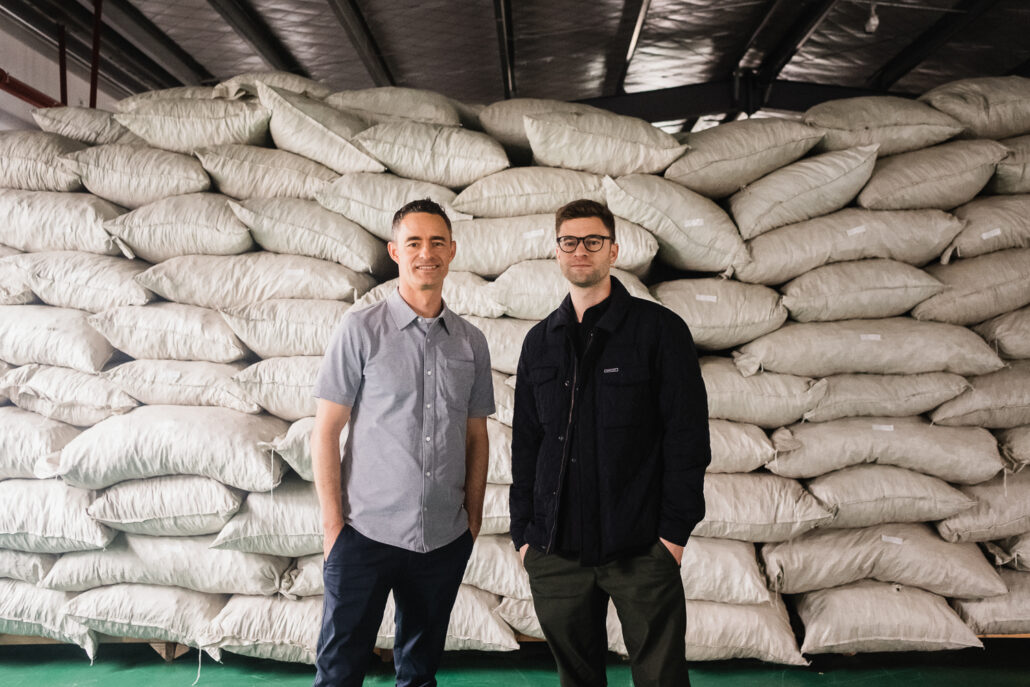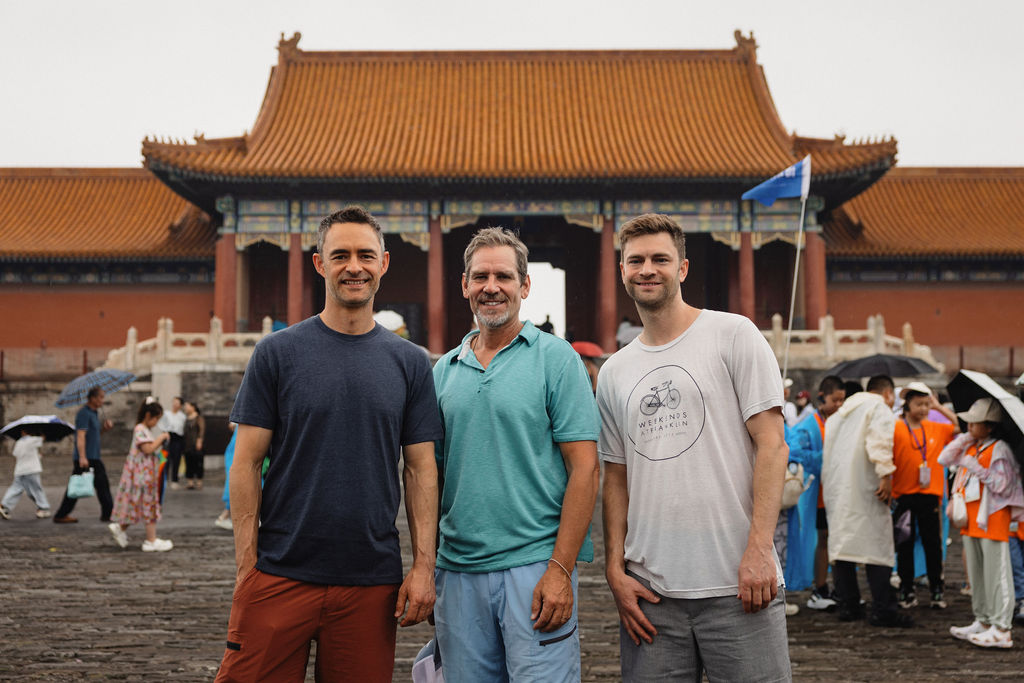In early December my brother Adam and I traveled to China on one of our customary visits to farms that grow our mushrooms and the facilities that process Nammex organic mushroom extracts. China has such a long history of growing and using mushrooms both for food and medicine, and it’s always inspiring to see how much care goes into growing and handling them. China is such a fascinating place to visit.
We noticed upon our arrival in Shanghai how quiet the airport was, particularly compared to Seoul. This confirms what we heard from industry colleagues, who reported that travel to China is about 10% of what it was before Covid. It was a dramatic change since our last visit in 2019. We then took one of China’s many high-speed trains, with speeds up to 330km/h, to southwestern Zhejiang province to visit our exclusive manufacturing partner’s brand new extraction factory that came online during Covid.
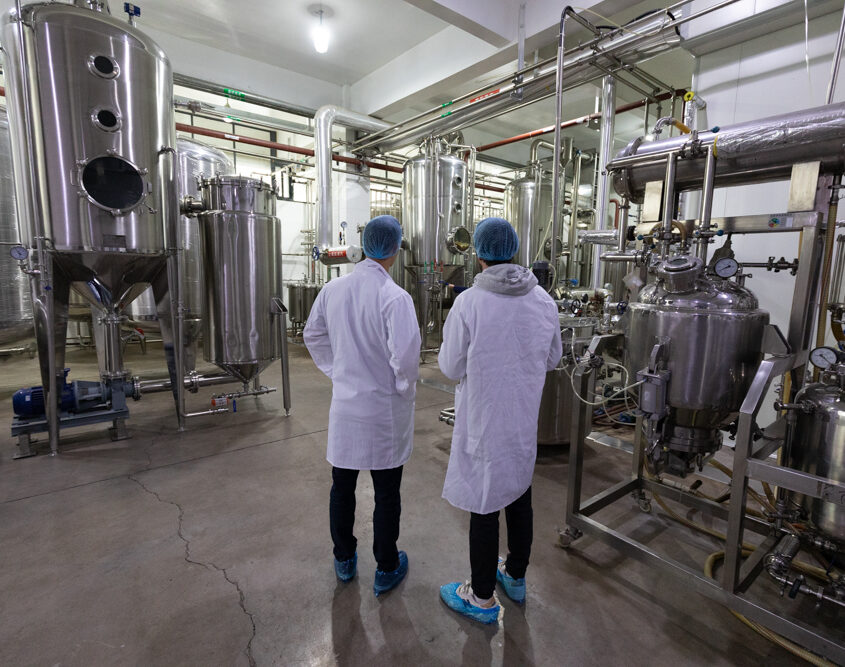
This state-of-art, organic, GMP facility meets all the necessary US regulations and is 3rd party audited every year. The facility has numerous extraction tanks and spray dryers that process thousands of kilos of dried mushrooms in storage here. There’s a fully staffed quality control team with their own floor where they’re able to run all the necessary tests to make sure our products meet specifications before leaving China. There are also solar panels on the roof that offset energy consumption, and power air conditioning in the hot summer months. Because demand for Nammex ingredients has grown massively, we work closely with our partners on raw material planning and finished extract projections to ensure that we can meet future growth. The current capacity can handle 500,000 kilos of extract powder a year, with multiple dried mushroom storage facilities nearby and land next door for future expansion.
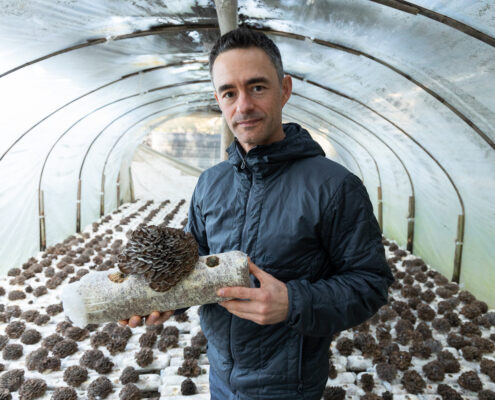
The next day we were off to Qingyuan County, one of China's 17 key regions of global significance for biodiversity. For hundreds of years local residents have made thoughtful use of forest resources to cultivate mushrooms. They have developed an agroforestry system with mushroom and forest co-culture methods. The traditional knowledge and techniques were developed over centuries by “Gumin”, which is the name for farmers who cultivate mushrooms by integrating forest conservation and agricultural production while following the best aspects of ecological agriculture. The main focus is quality and sustainability. Qingyuan County produces around 20% of China’s mushrooms, employing over 70,000 people, and creating about one billion USD in economic output annually. If you would like to learn more about this area, the Food and Agriculture Organization of the United Nations has a good article.
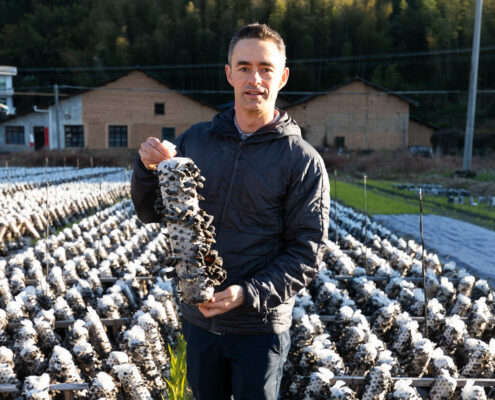
Our first stop was to visit a farm that grows wood ear mushrooms (Auricularia heimuer). While this is a mushroom we do not currently sell, it is one of the most popular edible mushrooms in the world and does have functional benefits backed by extensive research. As with all our partners in China, their understanding of what these fungi need to grow into the high-quality mushrooms we require was remarkable. This farm was impressive in their attention to detail required for a robust harvest of quality mushrooms, quite similar to others we’ve seen in the past. It’s very common to put the colonized wood ear logs in the rice fields after the rice harvest, essentially performing crop rotations.
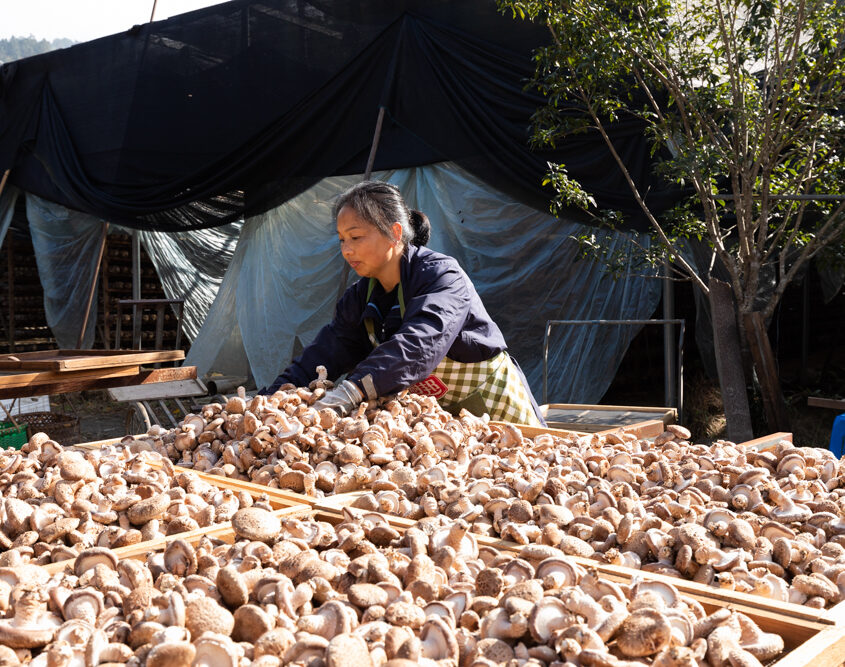
One of our nearby shiitake growers is also in this wooded, hilly rural area. They produce 12,000 kilos of fresh mushrooms from 1.3 acres, with a dozen or so people unwrapping the logs ready to fruit, picking mushrooms off the sawdust logs, trimming them, and laying them out to dry. After our time there, it was entirely appropriate to visit the Shiitake Temple, a place of worship for Wu Sangong, the first person to figure out how to cultivate shiitake mushrooms over 800 years ago. The temple, which was first built in 1265, holds a ceremony honoring him every July. Right next to the Shiitake Temple is one of Qingyuan’s famous wooden bridges. Both Zhejiang and Fujian provinces are very famous for their wooden bridges. Many are protected natural heritage sites.
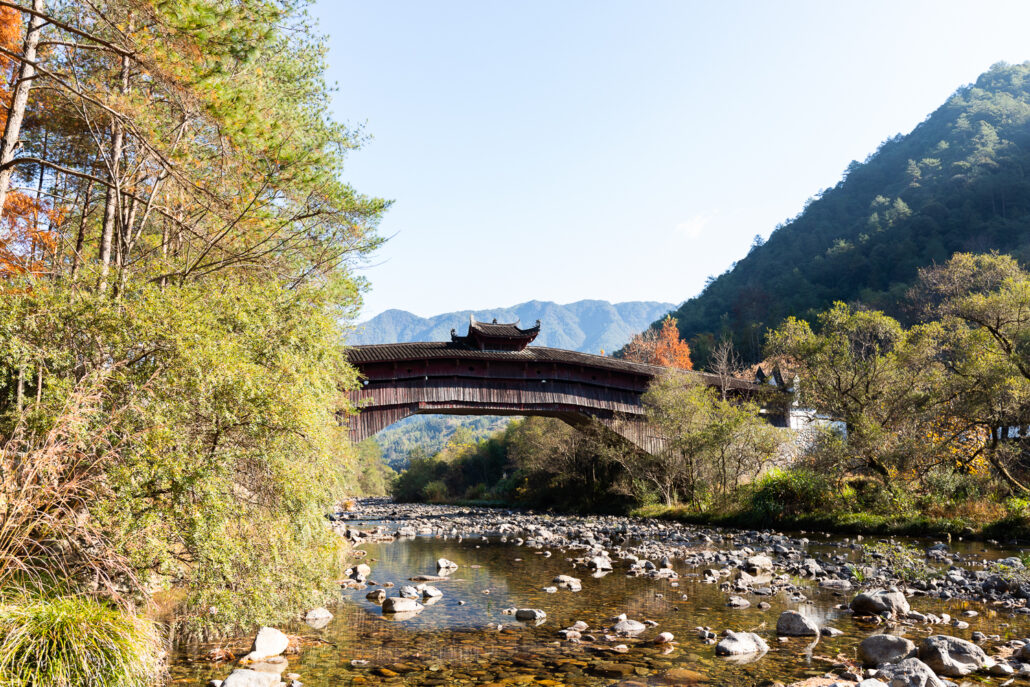
From there we traveled to the Qingyuan Mushroom Market, which is the largest mushroom market in China. For people as obsessed with mushrooms as we are, this was an incredible place to walk around. This is probably a good time to share that on this trip we ate mushrooms every day at every meal, and ate over a dozen different wild and cultivated mushroom species, possibly more.

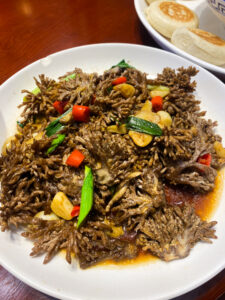
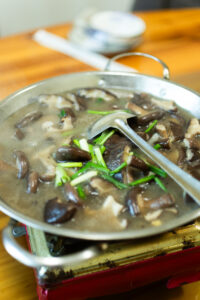
The next day we continued back into the mountains of Fujian province to Gutian County to visit the lion’s mane farms. While confirming quality and sustainability is always part of our purpose, we also wanted to check on scalability for this ingredient that is growing in popularity so fast. Nammex currently has over 3 million lion’s mane logs in production, across many different farms. One farm we toured had 80,000 logs growing. After harvesting, the spent sawdust logs are dried and used as fuel to power the mushroom dehydrators.
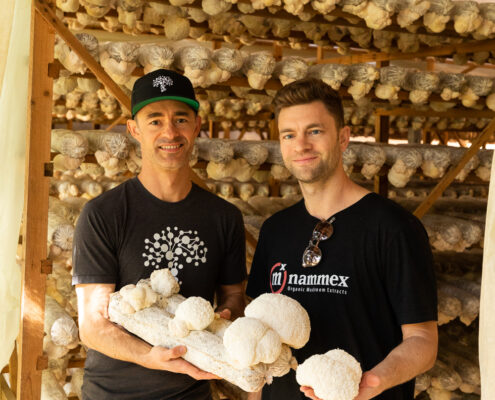
December 7th we focused on tremella. While touring one farm with 60,000 logs growing this mushroom, we noticed that the mycelium is a distinctive black color. The temperature and humidity are closely controlled, as this mushroom does better in very high humidity. Nearby, we also saw nameko mushroom (Pholiota microsprora), which we hadn’t seen in cultivation before.
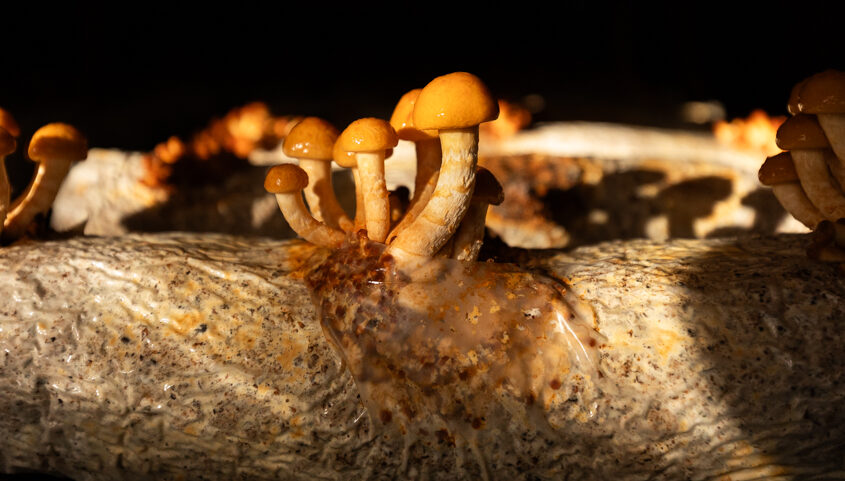
The following day we moved on to cordyceps. These mushrooms need approximately 80 days from inoculation to harvest. Temperature and humidity in these grow rooms are tightly controlled, and the mushrooms are guided to maturity by LED lights.
Our next stop was in Songyang at a local government funded mushroom research institute. They have over 200 different lion’s mane strains in production to look for unique characteristics, and more than 100 strains of shiitake in cultivation. We also stopped in to see a tea R&D farm with over 10,000 tea plants growing. The day was rounded out by a stop in the ancient villages in Songyang, which were first built around 1655 and today house approximately 300 people.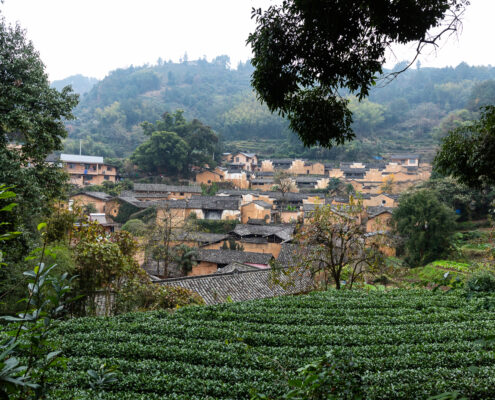
An interesting fact we picked up along the way is that over 100,000 kilos of cultivated caterpillar fungus (Ophiocordyceps sinensis) is being produced today, although it has yet to bring the price of the wild version down.
On our final day we were back on the train to Shanghai, to spend time with our friend Professor Edward Yang, whose father invented PSP (Polysaccharide Peptide). PSP is a turkey tail mycelium extract which is produced through liquid fermentation and further purification. The end product is approved by the Chinese government as a drug. We’re bonded by being the sons of men whose lives have been devoted to making the benefits of mushrooms more accessible to people.
While the main purpose of our trip was to confirm the high quality we expect and continued supply of our ingredients as demand for Nammex products grows, the long history of reverence and dedication to mushrooms is inspiration we draw from, every day.
- Skye Chilton, CEO, Nammex
